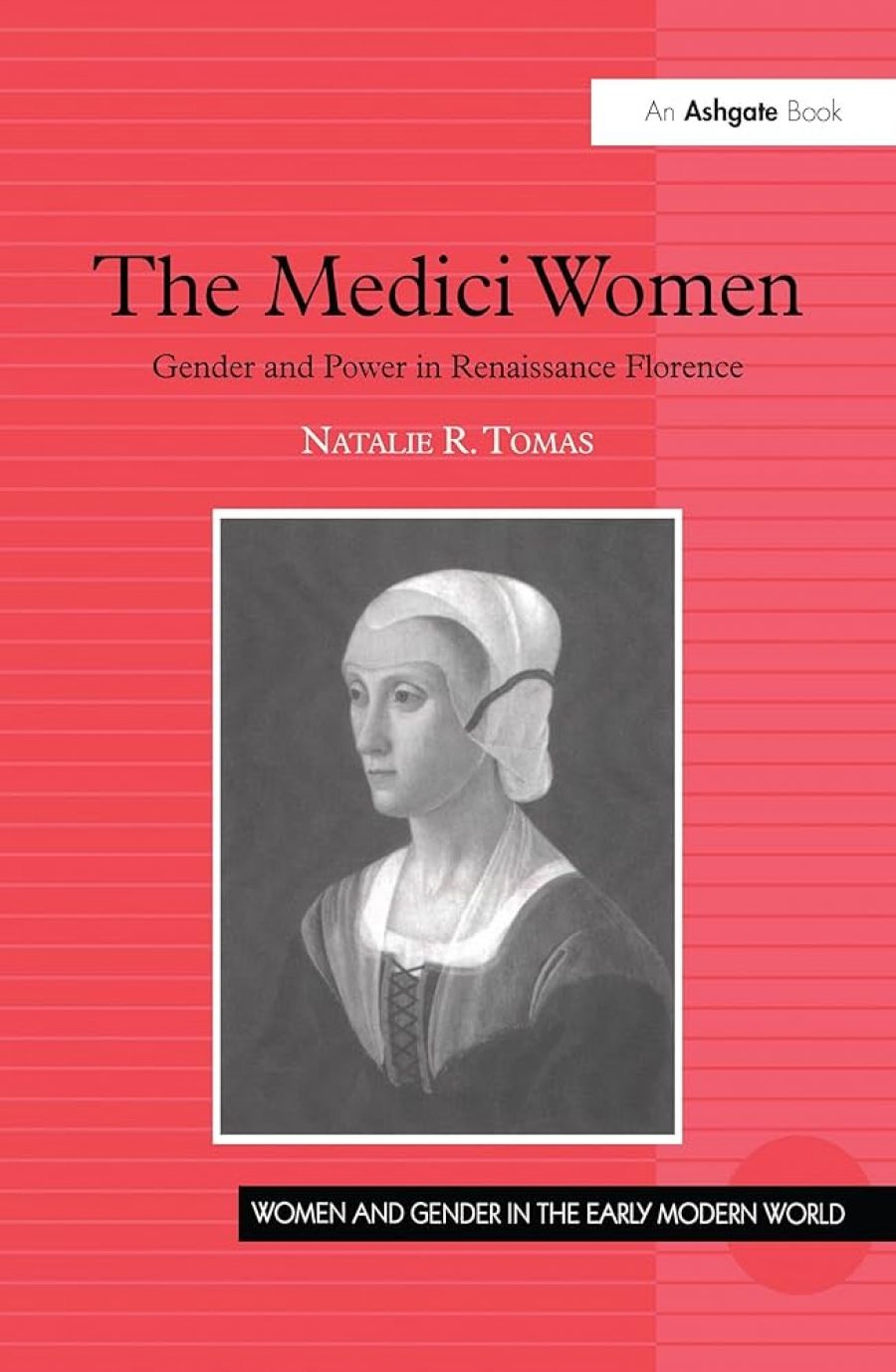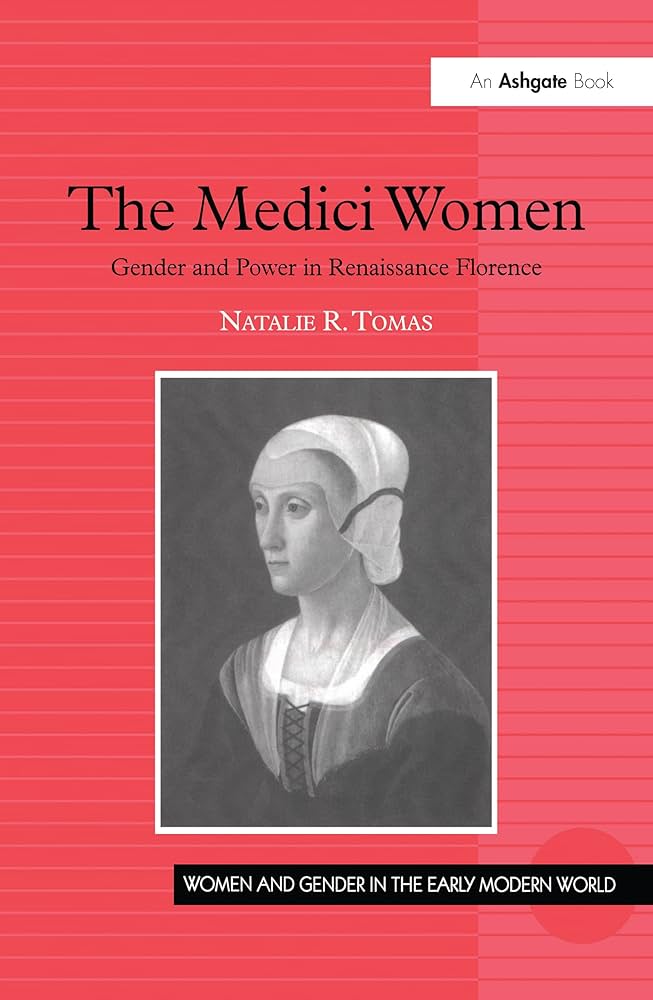
- Free Article: No
- Contents Category: History
- Custom Article Title: Medici Matriarchs
- Review Article: Yes
- Article Title: Medici Matriarchs
- Online Only: No
- Custom Highlight Text:
The history of fifteenth-century Florence is indissolubly linked to the Medici, the political bosses and patrons of the arts who presided over the city-state’s Renaissance. The names of Cosimo, Lorenzo and Giovanni, known to God and the world as Pope Leo X, immediately come to the fore in any discussion of Renaissance Italy. Rarely heard are the names of their female kin: Contessa de’ Bardi, wife of Cosimo the Elder and republican matron; Lucrezia Tornabuoni, mother of Lorenzo il Magnifico, and vernacular poet; Lorenzo’s daughters; Lucrezia Medici Salviati and Contessa Medici Ridolfi; his daughter-in-law, the despised Alfonsina Orsini Medici; or of his granddaughter, Maria Salviati Medici, who worked so assiduously to secure the future of her son, Cosimo, Grand Duke of Florence.
In The Medici Women, Natalie Tomas seeks to explore the political and cultural influence of these Florentine matriarchs who, by birth or marriage, were at the centre of the Medici clan. She investigates why and how certain Medici women were able to utilise power and influence contemporary perceptions and representations of their authority.
- Book 1 Title: The Medici Women
- Book 1 Subtitle: Gender and power in renaissance Florence
- Book 1 Biblio: Ashgate, £45 hb, 246 pp
- Book 1 Cover Small (400 x 600):

- Book 1 Cover (800 x 1200):

As Tomas points out, the focus on women, politics and power in writing on Renaissance Italy has been on the princely courts. It was as the consorts, mothers and daughters of princes that women occupied political space and were most visible. The openings for women were far fewer in republican city-states, where, indeed, the notion of women and rule was most abhorrent and associated with princely despotism. Thus it is not surprising, as Tomas demonstrates, that the century-long rise of the Medici from first citizens in a narrow oligarchy to grand dukes of Tuscany was accompanied by growing opportunities for their womenfolk in the political arena. The gradual shift in the locus of government from the Palazzo della Signoria to the Medici family palace rendered the borders between public and private more confused and permeable. Contemporary Florentine republican citizens saw the increasing visibility of the Medici women as a sign of the growing seigniorial power of the family. Hence the con-temporary bad press for Alfonsina Orsini Medici, who exercised effective ‘rule’ in Florence from 1515 to 1519, while her son Lorenzo, the head of the Medici régime, was absent from the city.
The power that the women exercised was for the most part informal through their role as intercessors with their powerful male kin. As such, they were merely operating within the Florentine political processes of patronage and clientage. Indeed, the many examples that Tomas provides from the requests for favour that the women received from supplicants illustrate in rich and graphic detail the operation of Florentine politics as well as the influence of Medici women. The range of requests for favour extended from help with unjust prosecutions, imprisonment and taxation assessments, to assistance with securing administrative posts and ecclesiastical preferment, to provision for dowries for poor girls, relief for widows and orphans, and pacification of disputes. In the fifteenth century, the requests for assistance from the Medici women were often couched in terms that represented the women as pious matrons and compassionate mothers. Such representations clearly linked the women to that mother who was such a powerful intercessor with the divinity, the Virgin Mary.
By the early sixteenth century, when Alfonsina Orsini had become an important figure in Medici rule in Florence, she was not only an intercessor with her male kin but a force in domestic and foreign affairs. Her role is crudely visible in the marginalia to official documents: ‘by order of the Magnificent Lady Alfonsina.’ Nevertheless, there is little doubt that Alfonsina would have agreed with the exasperated comment of Nannina Rucellai, sister of Lorenzo de’ Medici, quoted by Tomas on her opening page: ‘O do not be born a woman if you want your own way.’
A recent article in the American Historical Review referred to the Anglo-American-Australian contribution to the historiography of Renaissance Italy. This reference is international acknowledgment of the considerable body of work produced by historians and literature and language scholars working in Australia. The most prominent local centre of Renaissance studies is Monash University, where Bill Kent has nurtured undergraduate and postgraduate students for more than three decades. Monash has recently marked its importance in Italian studies with the opening of its centre at Prato and with Kent’s appointment as founding director.
Natalie Tomas is one of a number of Kent’s students who have published significant research on Renaissance Italy. The origins of her study of the Medici women in a doctoral thesis are evident in the scholarly apparatus that accompanies, but does not interrupt, her narrative. Over a third of the book consists of footnotes and a bibliography, which provide a truly splendid resource for anyone interested in the history of women not only in Renaissance Florence but also in medieval and early modern Europe.


Comments powered by CComment